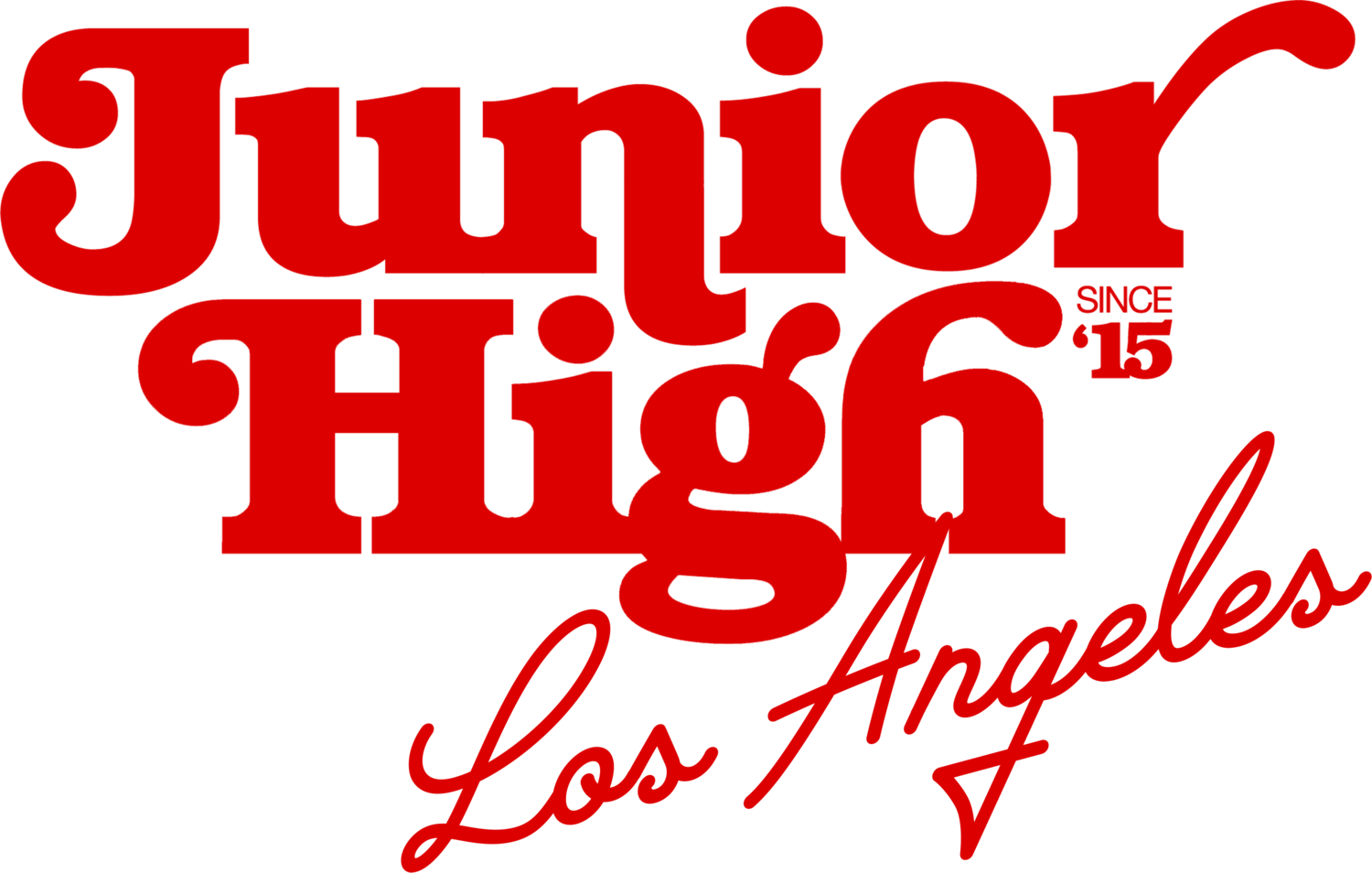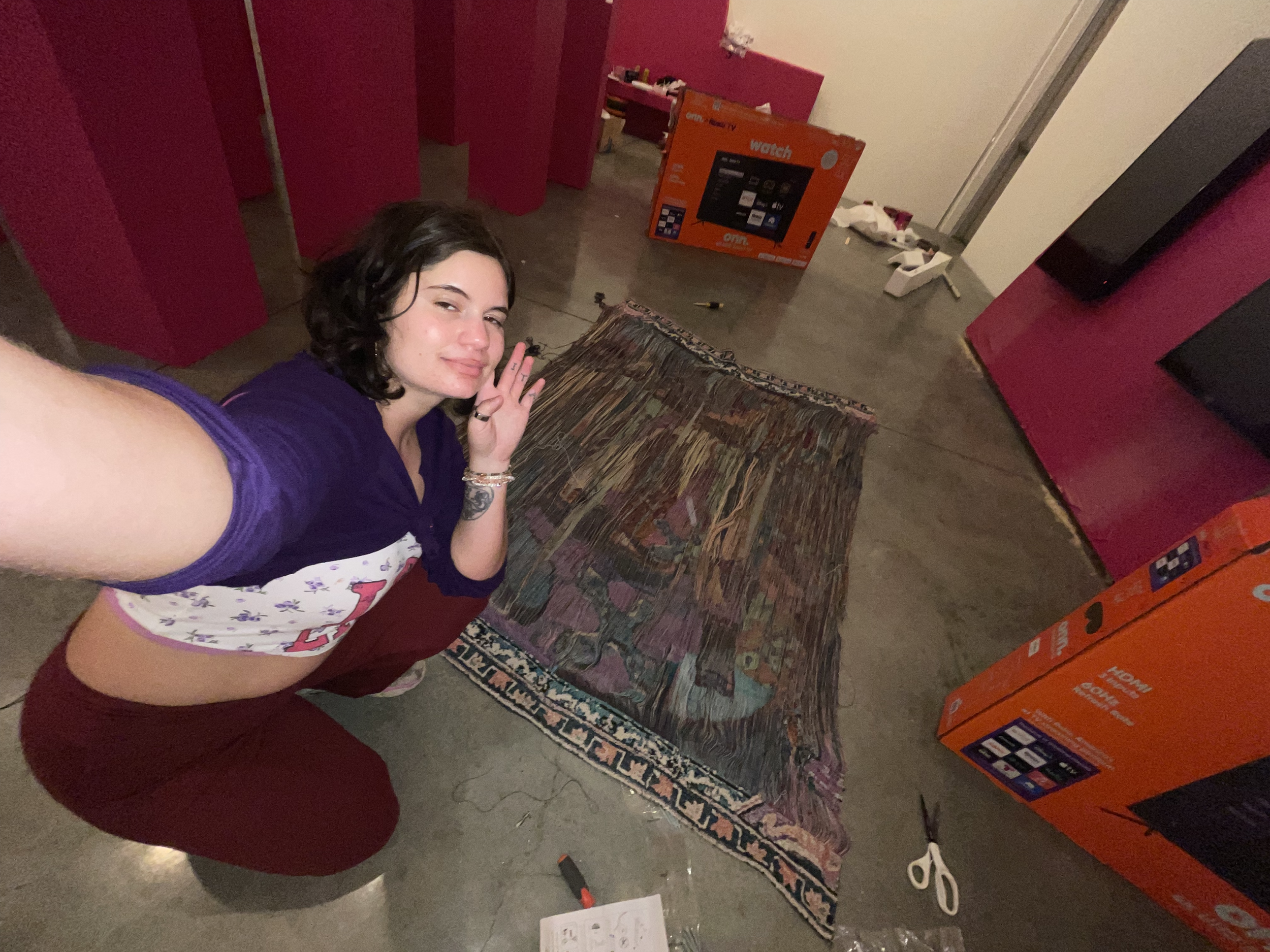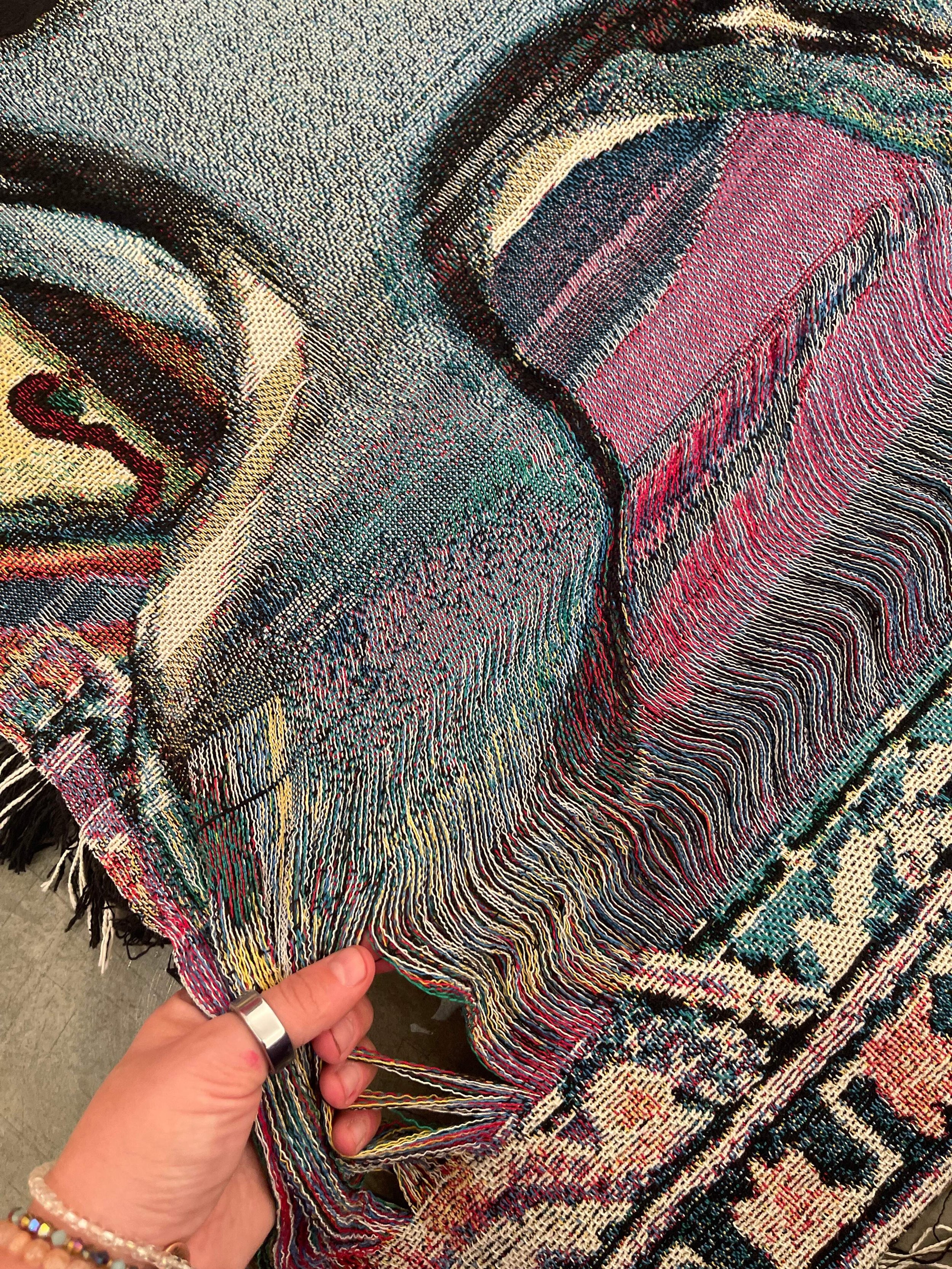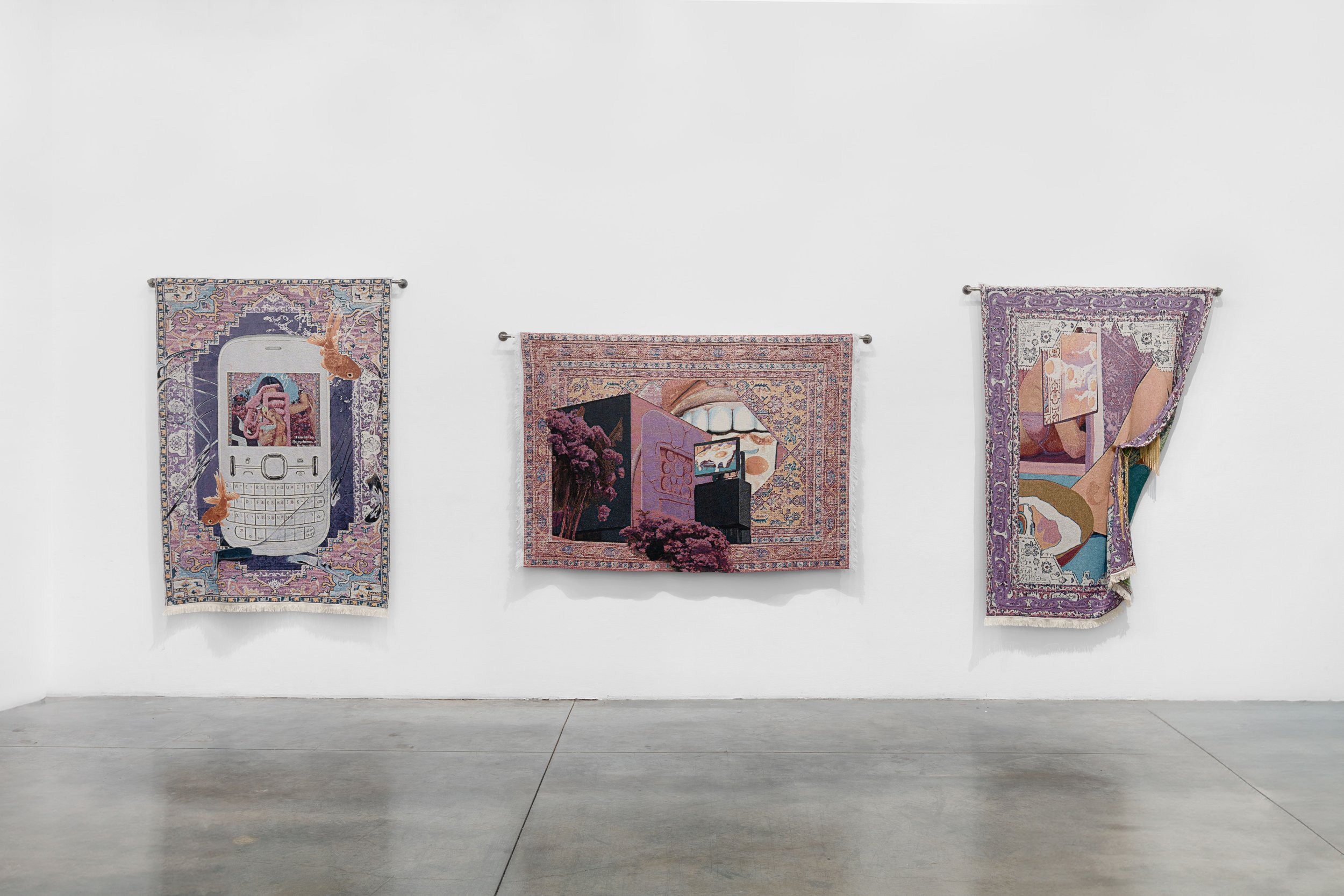Inside Vita Kari's Billboard Prenup: A Byte of Love
⤏ PHOTOS BY VITA KARI
⤏ IN CONVERSATION WITH JUNIOR HIGH
When Vita Kari isn’t trapped in a billboard (can or cellphone) and telling you the craziest thing about being creative, you can find them devouring their own body at New York Fashion Week while donning a handmade hamburger headpiece, or learning how to fund community art spaces for the anticipated revival of VITAWOOD. It’s all apart of their brand. Vita Kari’s art exists in the blurred lines of the digital and physical realm offering the nuances of virality, digital identity, and commercialism while highlighting queerness, and diaspora.
In preparation of their solo exhibition, BillBoard Prenup: A Byte of Love Vita Kari gave Junior High a behind the scenes look at the installation, and talked becoming a meme, participation in performance art, and their grandmother’s influence on their art.
All of your art is incredibly impressive and fun, but I'm OBSESSED with your hyperrealistic paintings. Do you remember the first art piece you created?
VITA KARI: Awwww Thanku!!!! One of my first memories of creative work is making a fake newspaper, almost a zine, full of drawings and stories. I started hustling them at school, trying to sell them for a dollar. I feel like that's really telling about how I moved forward as an artist. It was more than just making the work–I wanted to expand it, building into the next project through funding. It was the precursor to my work morphing into a critique of marketing structures and consumption.
Your grandma shows up in your art quite often from your "My Grandma's Dying and I Just Keep Making Fried Egg" piece to your upcoming exhibition —Billboard Prenup— where you're repurposing her clothes and rugs. What significance or role has your grandma played in your art?
VK: Throughout my work, my grandmother plays a significant role due to our intergenerational connection. The larger representation of the old world and the hyper-new: I'm interested in investigating what happens when those two things collide. Also on a more personal note, I was experiencing extreme virality at the same time that she was actively passing. While I was experiencing this romanticized level of attention, I was also her caretaker, clipping her toenails. Due to our language barrier and also extreme age gap, there are moments lost in translation between us–such as her understanding of queer identity–but our relationship transcended that.
There's a clear difference between using TikTok to promote your art, and using TikTok as a form of art. What inspired you to explore short-form video content as art?
VK: Short form video is the medium that comes easiest to me, and as story tellers and professional aesthetic people, it's easiest to create in that form. I've been making videos for as long as I can remember, but it wasn't until my Masters program that I realized I could utilize it as a performance piece.
Most people dread becoming a meme but you wanted to become a meme for the sake of art. What is it like going viral?
VK: For me, the replications of the self and the circulation of the performance feel really fulfilling. I 10/10 recommend it to anyone.
Your art both seeks to disrupt social media and doom scrolling while also blurring the lines between the digital and physical self/world? Is that a difficult line to teeter?
VK: Most of us blur the lines between physical and digital whether we realize it or not. Even with something as simple as navigation–like using our GPS in the car. I think the transgressive nature becomes when that moment is highlighted and brought to a place of obstruction, like when pieces are printed out in my videos and a glitch is offered as an alternative to the doom scroll or accepted reality.
The most common critique on your "The Craziest Thing About Being Creative" series is that it's not really art because you're just printing stuff out. Why do you think so many people miss the point?
VK: Anytime I receive a comment where someone says it's not art, I consider that an extension of the project. That participation in itself is part of the performance. I would argue that they're not missing the point, if anything they're engaging in a participatory digital conceptual work, whether they realize it or not.
Audience participation is important with performance art and we've heard of performances where the audience takes it too far. Have you ever had hesitations of putting yourself in a vulnerable position when taking your art public?
VK: This sounds silly–but it's not until afterwards that I finally reflect on everything and I'm like “well, glad that worked out. I'm glad I wasn't murdered haha.”
Along with being your "The Craziest Thing" being art it's also become a game to viewers where they try to guess what's printed before you make the reveal but I need to know what is the printer, paper, ink budget? lol
VK: I'm going to do a big printer reveal soon! I spend way too much on ink, printer paper Etc. the good news is I'm going to utilize it for a giant collage project in the future and everything gets saved. but realistically I actually spend less than $60 on everything a month– it's less than I expected it would be.
What's a medium of art you haven't explored yet but would like to in the future?
VK: I'm scared of Ceramics so maybe that means I should try it!
Community art spaces are so important for accessibility. Now that you're almost done with your MFA, (congrats btw!) Can we expect a VITAWOOD comeback?
VK: OMG thank you! yes I'm hoping for vitawood come back that's better than ever. A big reason I went to grad school was to understand how to fund a community-based space and keep the doors open. Understanding grants and institutional funding is something I'm still navigating, but before school I literally didn't understand it at all. It felt like an impenetrable language! Now I have a better grasp on things and I'm confident that I can make a space that won't rely on renting out to brands in order to keep it free and accessible to artists








